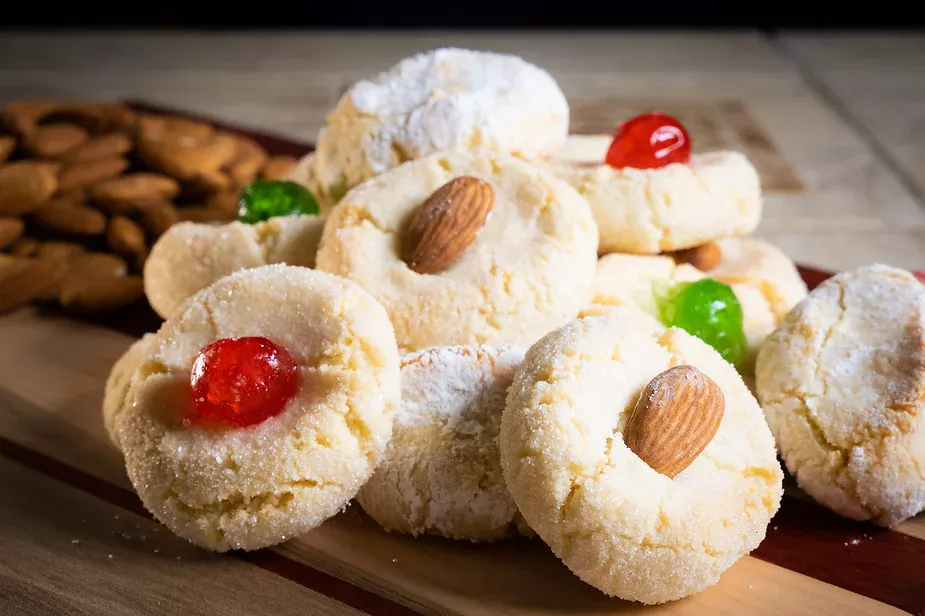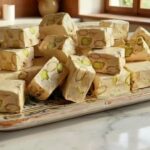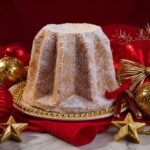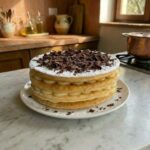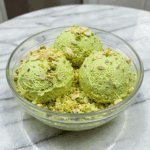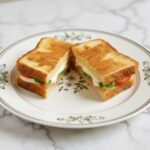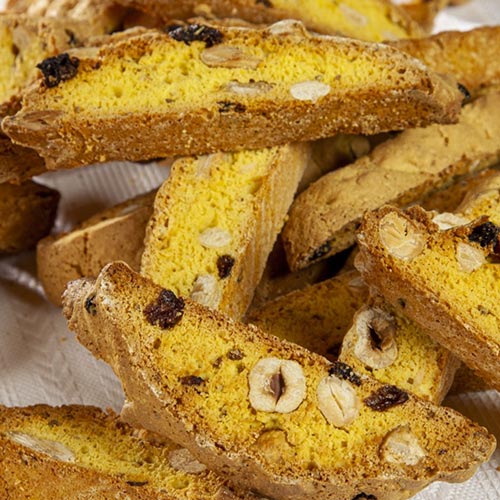Paste di Mandorla: Soft & Chewy Sicilian Almond Cookies
Let’s talk about these Italian almond cookies, they’re just irresistible! And get this, they have such a cool backstory, especially in Southern Italy. You know, places like Sicily and Puglia where almond trees are practically everywhere.
These cookies hail from Sicily, a region that’s been influenced by all sorts of cultures over the years. Back when the Arabs ruled from the 9th to the 11th centuries, they brought in some incredible ingredients. Sugar, citrus fruits, and almonds. Those ingredients really transformed the local sweets. It’s around that time that the first almond pastries began to pop up.
People whip these cookies up for all sorts of events, weddings, religious festivals, you name it. In Southern Italy, there’s this lovely tradition around All Saints’ Day on November 1st where families make Paste di Mandorla to remember their loved ones who’ve passed away. It’s such a heartfelt gesture that really shows how much value they place on family and memories.
Let’s get into the nitty-gritty of the ingredients. You’ve got ground almonds, sugar, and egg whites as the main players. Some bakers like to throw in a bit of citrus zest or even top them with whole almonds or candied fruit. Over the years, Sicilian pastry chefs have really nailed the recipe. Nowadays, Paste di Mandorla has become a go-to dessert for celebrations and holidays. Honestly, with their rich history, delicate texture, and bold almond flavor, how could anyone not fall in love
- 6 cups almond flour
- 2¼ cups granulated sugar
- 1 tbs honey
- 4 egg whites
- 1½ tbs almond extract
- 2 cups powdered sugar (dusting)
- Toppings such as candied cherries or whole almonds optional, see below
To begin, preheat your oven to 350F (175C). Next, prepare your baking sheets by lining it with parchment paper. This will prevent the cookies from sticking and make clean-up easier.
In a large bowl, use a fork to beat the egg whites until they reach a slightly foamy consistency. Next, add the almond flour, sugar, almond extract, and honey to the bowl. Mix all the ingredients together until a dough forms.
Divide the dough into portions and place them on a tray that has been lightly dusted with confectioners' sugar. Cut approximately ½ x ½ inch in size and roll into a ball shape. Arrange the cookies on a baking sheet that is lined with parchment paper, ensuring they are evenly spaced.
After arranging the cookies on the baking sheet, you can proceed to decorate them with candied cherry halves and whole almonds. Get creative and place the cherries and almonds in a visually pleasing pattern on top of each cookie. Once the cookies are beautifully decorated, place the baking sheet in the preheated oven and bake them for approximately 15 to 20 minutes. During this time, keep a close eye on them to ensure they develop a light color on both the top and bottom surfaces, indicating that they have been baked to perfection.
Use high-quality almonds: The flavor of these cookies relies heavily on the almonds. If possible, use blanched almonds or finely ground almond flour made from whole, high-quality almonds. Avoid almond meal with skins for a smoother texture.
Don’t overmix the dough: Once the ingredients come together, mix just enough to form a sticky dough. Overmixing can make the cookies too dense and affect their tender texture.
Chill the dough (optional but helpful): Chilling the dough for 15–30 minutes makes it easier to shape and helps the cookies hold their form while baking.
Keep your hands slightly damp when shaping: The dough can be sticky, so wet your hands with a bit of water (or even a little orange blossom water for extra aroma) to help roll the cookies into balls without mess.
Decorate before baking: Press a whole almond, pistachio, or piece of candied fruit into the center of each cookie before baking. It adds visual appeal and a burst of extra flavor.
Don’t overbake: These cookies should stay soft and chewy inside, with just a slight crisp on the outside. Bake until the edges are just lightly golden
Cool completely: They firm up as they cool, so don’t worry if they seem a bit soft when you take them out of the oven.
Storage
Room Temperature
Store the cookies in an airtight container at room temperature. They’ll stay fresh for up to 5–7 days. Place parchment paper between layers to prevent sticking.
Refrigeration
You can refrigerate them to extend freshness, especially in warmer climates. Store in an airtight container to prevent them from drying out. They’ll stay fresh for up to 10 to 12 days.
Let them come to room temperature before serving for the best texture.
Freezing
Paste di Mandorla freeze very well! Place cookies in a single layer on a baking sheet and freeze until firm. Then transfer to a freezer-safe container or zip-top bag. Freeze for up to 2 months.
Thaw at room temperature for about 30 minutes before serving.
Their flavor often intensifies after a day or two, so don’t be afraid to make them ahead of time for holidays or special events

